
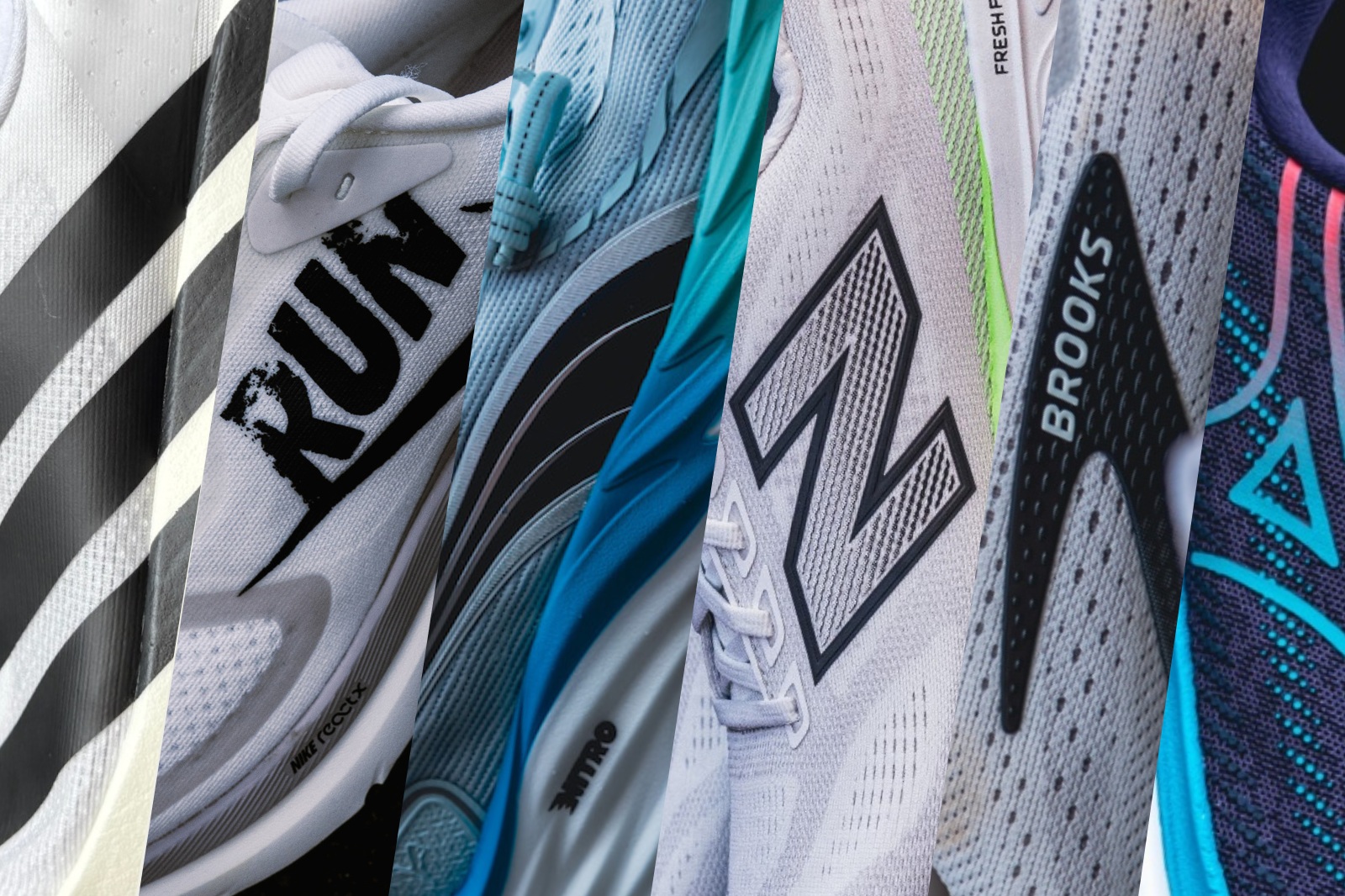
We independently review everything we recommend. When you buy through our links, we may earn a commission.
Our roundup of the best beginner running shoes includes all the top brands, including Nike, Adidas, Saucony, Asics, Hoka, and more.
This list includes quality daily trainers for just about every kind of runner, not just beginners.
If we missed a favorite of yours, let us know in the comments.
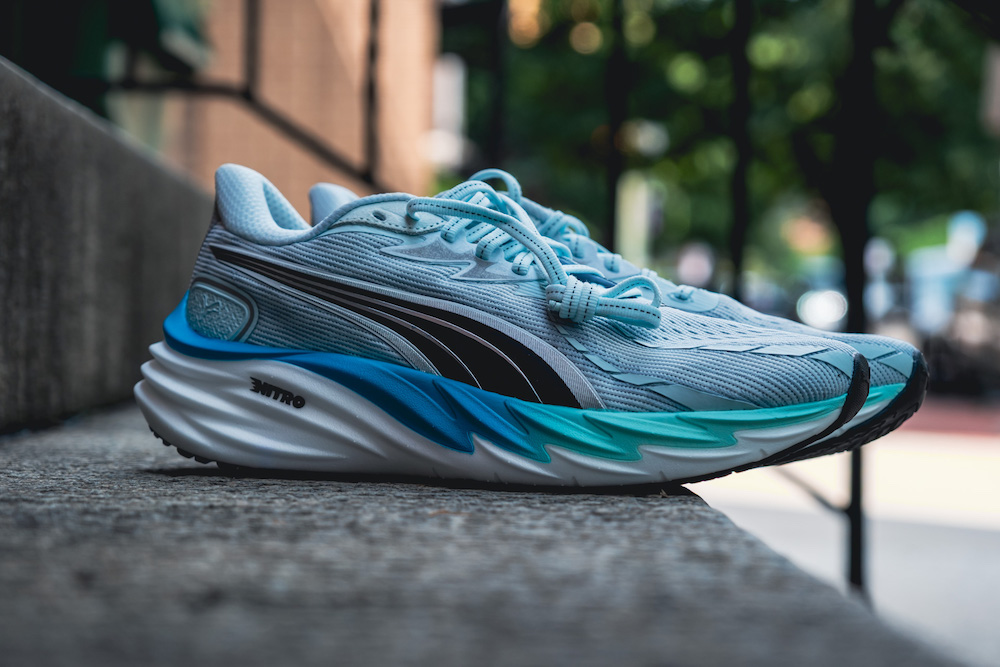
At $140, the Puma Velocity Nitro 4 is an absolute steal
If you have spent any amount of time here at Believe in the Run, you likely know that our team of reviewers has tested every kind of shoe on the market. There are daily trainers, super trainers, recovery shoes, max cush, race day, super shoes, plated, unplated, stability, trail, road to trail, gravel, and the list goes on.
As someone who is slightly obsessed with all things running shoes, the above list reads like my love language. But every once in a while I am reminded that I may be the outlier when it comes to the average consumer looking for a decent running shoe.

Clean and simple, the Adidas Evo SL has been a go-to shoe in 2025
This past week served as one of those reminders. I picked up my brother from the airport and started the drive from Denver up to Glenwood Springs, Colo., for our annual fly-fishing trip. We got talking and my brother mentioned that he just got new running shoes. I of course was curious what he got—perhaps a Nike Pegasus, maybe a Brooks Ghost, or even a Hoka Clifton. The go-to products from the local run store pushers. Maybe even an On Cloudmonster.
Nope!
His shoe of choice was the direct-to-wholesale Adidas Ultrabounce 5 “running sneaker,” purchased on Amazon. In his mind, the shoe was a steal: $57, marked down from $80. Now to be fair, my brother is a hell of a basketball player, but clearly not a runner. I wasn’t going to start our drive off on a bad foot (i.e. the one wearing the Ultrabounce 5). So after a quick cremation of the part of me that died, I changed the subject.
It wasn’t lost on me that the casual runner looking for a new pair of shoes might just be closer to my brother than me. Especially when you’re starting out. Go to Nike’s website and select the running category from the nav menu– you’ll find 80 different shoes ranging from the $295 Alphafly 3 to the $45 Downshifter 13 (on sale). Of course, Nike will tell you that they’re all great road running shoes; after all, they got units to move and tariffs to tackle. But let us be the first to tell you: Not all running shoes are meant for running.
So with that being the case, we wanted to do a roundup of the best beginner running shoes right now. No, we will not be reviewing the Ultrabounce 5 (we have standards!). But we do want to get you in a shoe that will inspire you to love running as much as we do.
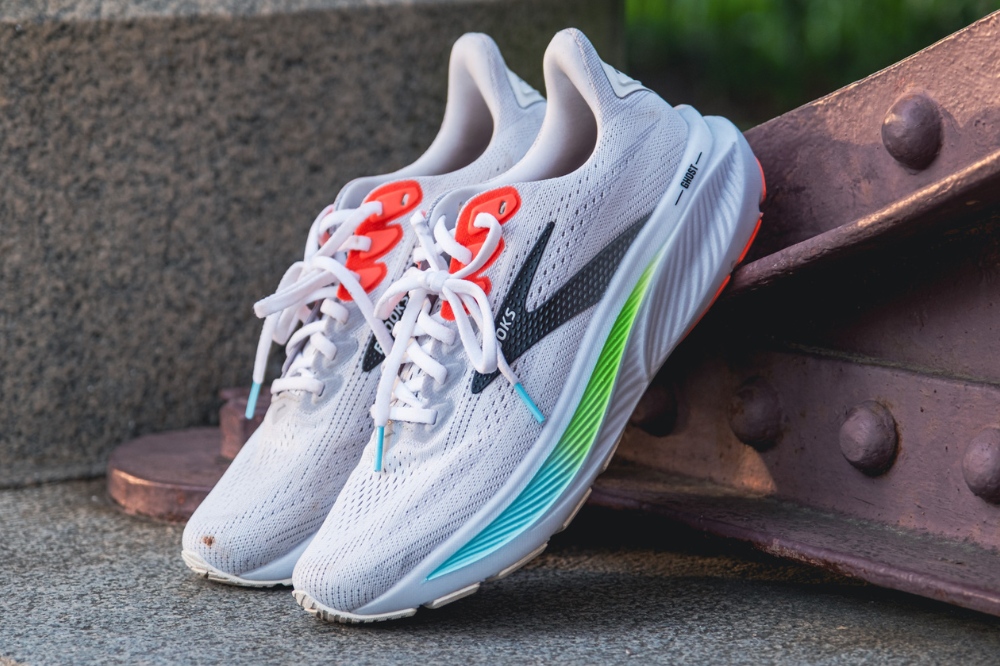
Brooks Ghost 17, the shoe that 95% of running stores will put you in as your first shoe
Before we get started, let’s establish a baseline for what constitutes a good beginner running shoe. It isn’t the cheapest “sneaker” you can find on Amazon. We’re talking about true running shoes — models built with the cushioning, support, and durability to handle real mileage– and a lot of it, for months on end– without beating you up. That means:
If a shoe can’t support a healthy, consistent start in running — whether that’s comfort, injury prevention, or value over time — it doesn’t make the cut here.

New Balance 880v15
If some of the tech talk in shoe reviews feels like another language, here’s a quick glossary of the stuff you’ll see throughout this guide:
STACK HEIGHT – The total amount of cushioning between your foot and the ground, measured at heel and forefoot. Higher stacks = more impact protection, often at the cost of ground feel.
DROP – The height difference between the heel and forefoot. Higher drops (8–12 mm) shift weight forward; lower drops (0–6 mm) promote a flatter stance and can change loading on your legs.
MIDSOLE FOAM – The cushioning material underfoot. Common types include EVA (traditional, durable), supercritical foams like PEBA (ultra-light, bouncy), TPEE-based blends (responsive but a bit firmer), and brand-specific versions like Brooks DNA Loft v3, Adidas Lightstrike Pro, Saucony PWRRUN PB, or Puma Nitrofoam.
ROCKER GEOMETRY – A curved sole shape designed to help you roll forward smoothly, reducing the work your legs do with each step.
STABILITY FEATURES – Design elements that help control excessive inward or outward foot motion. Can be “traditional” (firm medial posts) or “stable neutral” (wider base, sculpted sidewalls).
OUTSOLE RUBBER – The grip layer on the bottom of the shoe. Carbon rubber is denser and longer-wearing; blown rubber is lighter and softer. Some brands use proprietary blends like Continental (Adidas), Puma Grip, Goodyear (Skechers), or ASICSGRIP for extra traction.
UPPER – The fabric and structure that holds your foot. Engineered mesh, knit, and jacquard uppers balance breathability, support, and comfort.
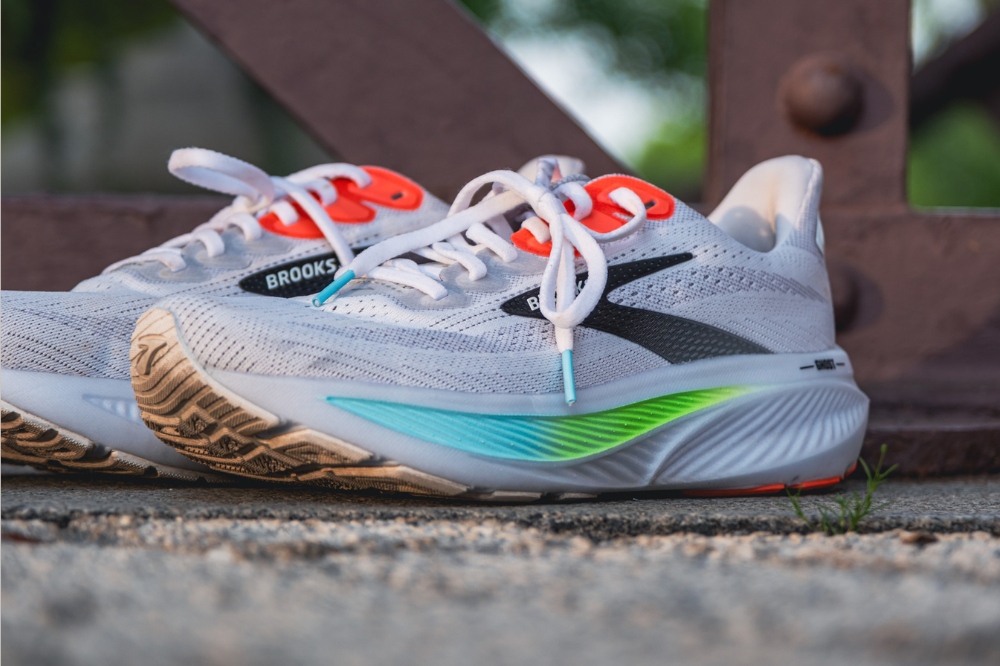
Daily miles
10.1 oz. (286 g) for a US M9,
8.9 oz. (255 g) for a US W7.5
36.5 mm in heel, 26.5 mm in forefoot (10 mm drop)
The Ghost 17 is as straightforward as they come — a neutral trainer that prioritizes comfort, consistency, and durability. The updated mesh upper is breathable and easy to secure, while the refined shape of the heel and a slightly lower drop help it move a bit more smoothly than earlier versions. Brooks’ DNA Loft v3 foam gives a steady mix of cushioning and resilience, with just enough softness to take the edge off long runs without feeling sluggish. Combined with a generous layer of outsole rubber, it’s a shoe built to handle day-in, day-out mileage.
It’s not flashy, and it doesn’t try to be. For someone starting out or anyone who wants a dependable option that doesn’t demand attention, this is a safe bet. It may not spark excitement on the run, but it delivers exactly what you expect from it — and will keep doing so for hundreds of miles.

If you like the Ghost’s reliability but prefer more cushion and a livelier feel, the Glycerin 22 steps it up. Its DNA Tuned midsole uses different foam setups in the heel and forefoot to create a soft landing followed by a quick, responsive push-off. The ride feels smooth and well-cushioned without getting unstable, and the fit is plush from heel to toe. It’s a touch heavier and pricier, but for those who want a premium daily trainer, it’s a worthwhile upgrade.
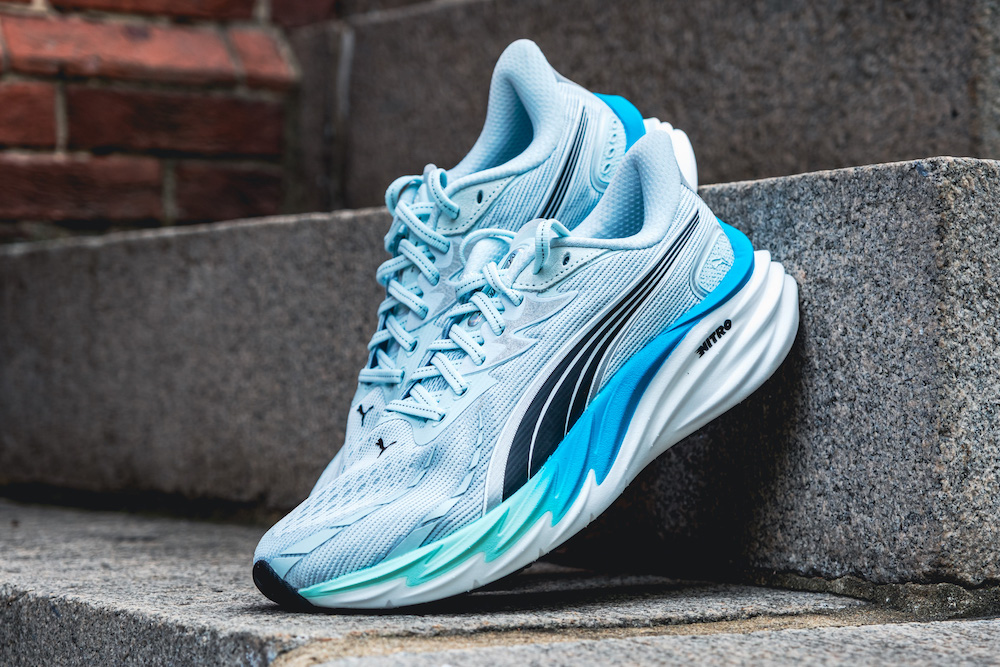
Daily miles
8.8 oz. (250 g) for a US M9
36 mm in heel, 26 mm in forefoot (10 mm drop)
The Velocity Nitro 4 is Puma’s entry-level daily trainer — a non-plated, straightforward workhorse that slots into the same lane as a Nike Pegasus or Brooks Ghost. Except, it’s much, much better. It drops weight dramatically from version 3 while keeping the same 36/26 mm stack and 10 mm drop.
The midsole is Puma’s nitrogen-infused Nitrofoam, a TPEE-based compound that’s lighter and more responsive than standard EVA, though not as performance-oriented as the ATPU found in Puma’s top-tier racers. Make no mistake, it’s still surprisingly great– the midsole is a touch softer, but it gives back a ton of bounce on the rebound.
The lighter build makes it a more approachable daily option than the clunky V3, and PumaGrip continues to deliver some of the best traction in the game — even if the outsole rubber feels a bit thick for a shoe this light. That said, the full coverage rubber is going to give you a ton of miles in the shoe. The rocker is subtle, the transitions are smooth, and it’s easy to settle into cruise control. Word of warning: if you have a wide or large volume foot, you should probably stay away. Those with a narrow foot, rejoice: the slim midfoot makes this shoe fit like a glove.
At $140, this has to be the best value on the market.
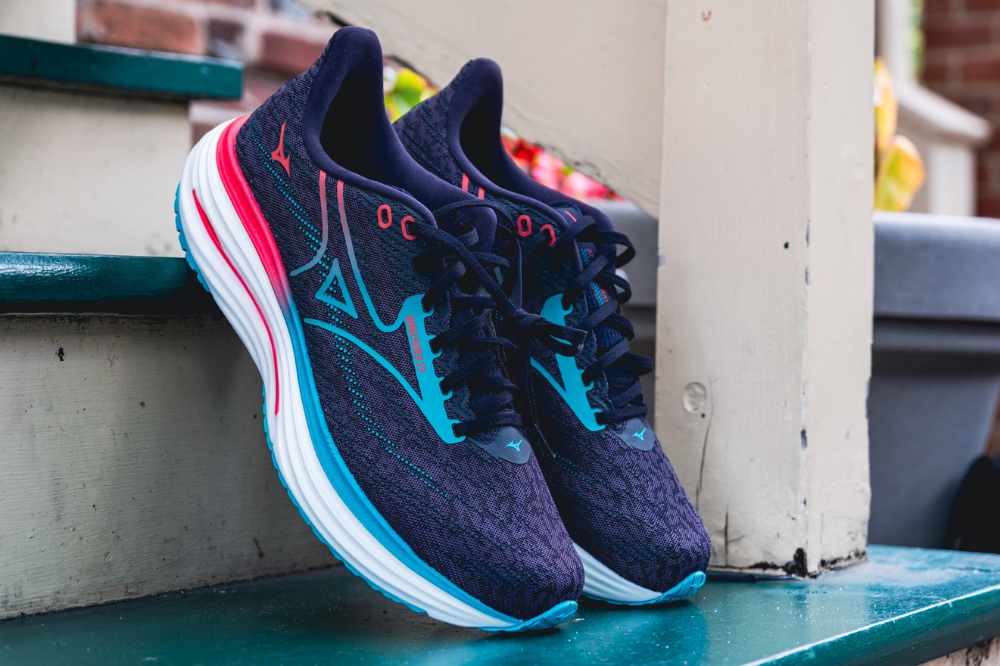
The Wave Rider 29 gives Mizuno’s legacy trainer a fresh, modern feel. The nitrogen-infused Enerzy NXT midsole and half-length Pebax Wave Plate combine for a stable, lively ride, while the jacquard mesh upper locks in comfortably without hot spots. It’s lighter than before, grips well thanks to the X10 outsole, and still has the durability to log serious miles. A great option if you want a high-drop daily trainer with a bit more snap than the typical stability-leaning model.

Daily training, uptempo runs, anything
7.9 oz (224 g) for a US M9,
6.6 oz. (188 g) for a US W7.5
38 mm in heel, 32 mm in forefoot (6 mm drop)
The Evo SL is a reminder that a simple formula can still work beautifully. Adidas built it around a full stack of Lightstrike Pro foam — the same lively compound found in their flagship racers — but left out the carbon rods, giving it a softer, more forgiving feel. The result is a light, bouncy trainer that can handle easy runs, long days, and the occasional pickup without feeling harsh or fatiguing. The mesh upper is straightforward and comfortable, keeping the weight impressively low for how much cushion is underfoot, and Continental rubber provides reliable grip for daily miles.
It’s not meant to add stability, so neutral runners will get the most from it. But for those who want race-foam fun without the stiffness of a plated shoe, it’s an easy choice — especially at a price well below most models using the same material.

If you want plush cushioning with a touch more structure, the Novablast 5 delivers a tall stack of soft FF Blast Max foam that’s smooth and protective for daily training or long runs. It’s stable for its height, but the extra softness takes away some of the snappiness past versions were known for. The fit is a bit more generous up front, so it’s especially comfortable for higher-volume feet.

Daily miles with a touch of stability
9.9 oz. (281 g) for a US M9
8.3 oz. (235 g) for a US W7.5
40.5 mm in heel, 34.5 mm in forefoot (6 mm drop)
Where the Evo SL feels quick and springy, the 880v15 brings you back to a more traditional, planted ride — the kind of platform that feels familiar from your very first step.
The 880v15 takes New Balance’s dependable daily trainer and gives it a little more polish. With extra stack height, a hint more rocker, and a wide, accommodating upper, it offers comfort without losing its structure. The padded collar and gusseted tongue hold the foot securely, and the firmer Fresh Foam X midsole delivers a steady ride with just enough give to keep easy miles comfortable. There’s plenty of grip underfoot, and the build feels ready for a high-mileage season.
At $140, it’s a well-rounded choice for runners who like a touch of stability in a neutral shoe. It won’t feel as plush as the 1080, but for those who want a bit more support in their daily trainer, the 880v15 is an easy shoe to trust.

For something more niche but equally capable, the Mount to Coast R1 brings an ultrarunner’s mindset to the road. Its PEBA-blend midsole offers a responsive yet controlled ride, while the split lacing system lets you fine-tune fit across the forefoot and ankle — especially useful over long distances. It’s light, comfortable, and has just enough stability to keep form in check late in a run, though you’ll have to live with the distinctive “click” that comes with each step.

Uptempo road miles with a natural toe box
8.1 oz. (230 g) for a US M9,
6.8 oz. (192 g) for a US W7
37 mm in heel, 32 mm in forefoot (5 mm drop)
If the 880v15 is your classic, well-cushioned cruiser, the Specter 2 shifts the focus toward lighter weight and a more performance-oriented feel without giving up comfort.
The Specter 2 pairs Topo’s roomy, natural fit with a build that’s light, responsive, and ready for a range of paces. This update trades the original’s EVA/Pebax combo for a full Pebax midsole, trimming weight while adding a bit more stack. The ride is smooth and steady, with enough rocker to help you keep momentum whether you’re running easy or pressing the pace. The mesh upper locks in well without any pressure points, and at just over 8 ounces for a men’s size 9, it’s easy to bring along for long runs or faster sessions.
If you like extra space up front but don’t want a mushy ride, this is an easy shoe to get along with. It’s simple, comfortable from the first step, and versatile enough to slot into almost any rotation.
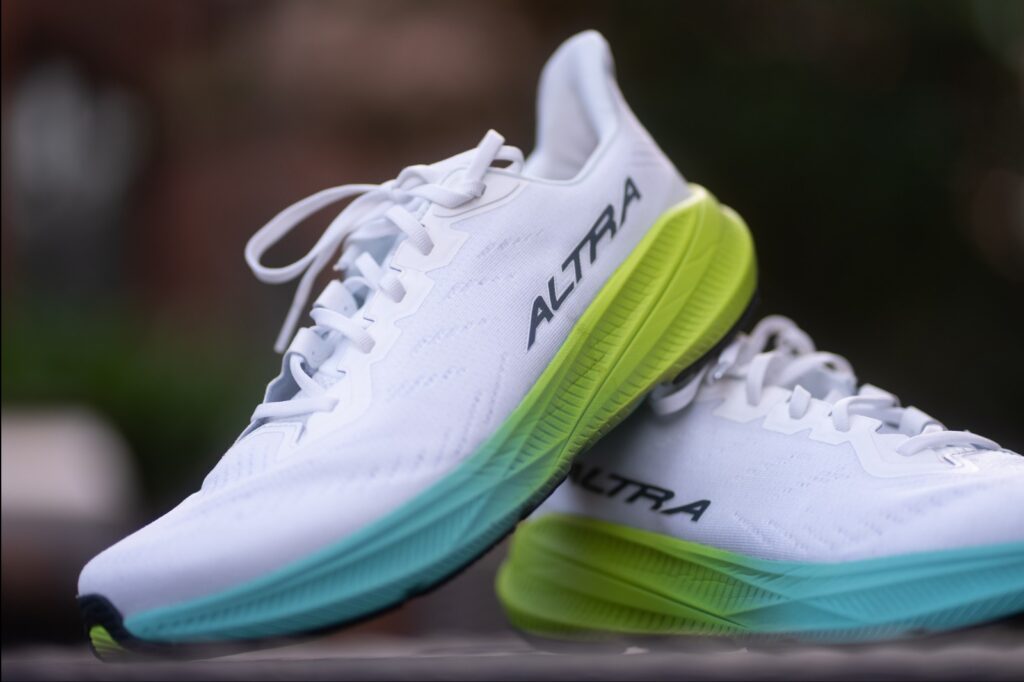
If you want a wide toe box with a softer, livelier feel, the Experience Flow 2 checks the box. The EGO P35 foam gives you a cushioned landing with enough rebound to keep things moving, and the rockered geometry smooths out each stride. It’s a comfortable daily trainer that can cover everything from recovery runs to light uptempo work, especially if you need more forefoot room than most shoes offer.

Daily training
10.8 oz. (305 g) for a US M9
44 mm in heel, 36 mm in forefoot (8 mm drop), 1 mm less for women
Coming off the lightweight, versatile feel of the Topo Specter 2, the Nimbus 27 shifts us firmly back into max-cushion territory. This is Asics’ flagship comfort cruiser — built for plush miles, easy days, and the kind of steady reliability you can take for granted.
The latest version keeps the big-stack FlyteFoam Blast+ Eco midsole (44 mm heel / 36 mm forefoot) but adds a touch more foam and a new engineered jacquard mesh upper that’s more breathable than before. The fit remains generous, with Asics’ excellent stretch-knit tongue and a wide platform that keeps the shoe surprisingly stable for its height. The ride is soft without being overly squishy, and while it’s not built for pace, it soaks up long, easy runs with minimal fuss.
The tradeoff is weight — it’s still on the heavier side compared to other daily trainers — and a midsole feel that’s more “steady” than “lively.” If you’ve liked the last couple versions, you’ll feel right at home here. If you want more pop underfoot, there are livelier options in Asics’ lineup. But for those who just want a premium-feeling shoe that can cruise for hundreds of miles, the Nimbus 27 fits the bill.
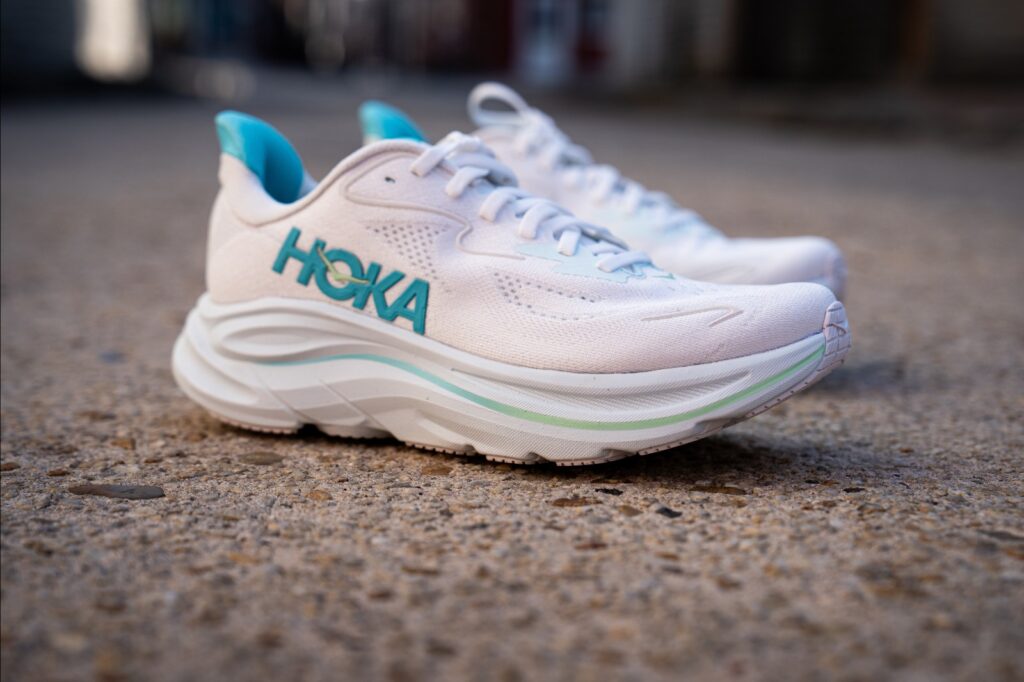
If you want something lighter, more rockered, and a bit more versatile day to day, the Clifton 10 is an easy switch. The compression-molded EVA midsole balances cushioning with mild responsiveness, and the new 8 mm drop smooths out the transition without changing the shoe’s signature feel. The fit is true to size with a touch more room up front, and at just over 8 ounces for a women’s size 7.5, it’s easier on the legs over longer efforts. It doesn’t chase cutting-edge foam tech, but for a dependable, well-cushioned trainer you don’t have to think about, the Clifton 10 remains a standout.
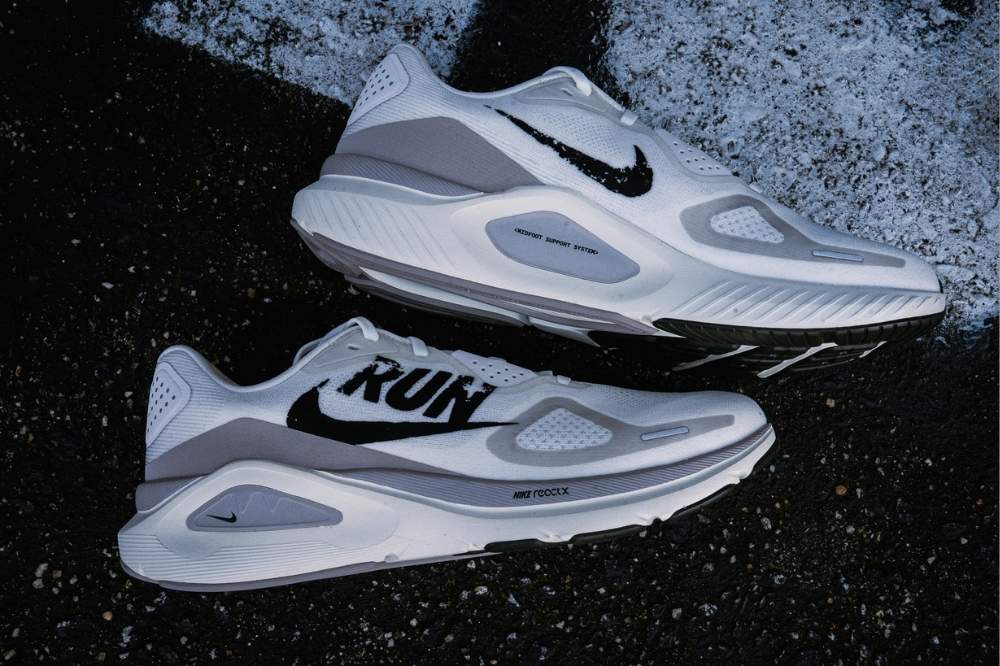
Stability
11.3 oz (321 g) for a US M10,
9.2 oz (262 g) for a US W8
38 mm in the heel, 28 mm in the forefoot (10 mm drop)
Stability shoes rarely get the spotlight, but the Structure 26 makes a case for why they still matter. Nike has rebuilt this long-standing model with ReactX foam for a more cushioned, energetic ride, a higher stack than ever, and a redesigned Midfoot Support System that adds structure without turning the shoe into a brick. Gone is the forefoot air bag, which helps smooth out the heel-to-toe transition, and the mix of blown rubber up front with durable rubber at the heel gives it both grip and longevity.
It’s not feather-light — just over 11 ounces for a men’s size 10 — but it runs balanced, with enough bounce to keep things from feeling flat and enough guidance to stay steady late in a run. The engineered mesh upper is breathable yet supportive, with overlays in the right spots to lock down the fit. For runners who want reliable stability that can handle everyday mileage without feeling clunky, the Structure 26 offers a lot of shoe for $145.

If you want light stability in a softer, more rockered ride, the Guide 18 is a solid alternative. It carries over the geometry and feel of the Guide 17 — PWRRUN foam for cushioning, a PWRRUN PB sockliner for step-in comfort, and Saucony’s Center Path Technology for subtle support. The wide platform and smooth rocker make it an easy shoe for both easy days and longer efforts, and the fit is glove-like without feeling restrictive. It’s not the most aggressive stability shoe, so heavier overpronators may want more structure, but for most runners seeking comfort with a hint of guidance, it’s a versatile and approachable option.

Daily training, long runs
11.4 oz. (325 g) for a USM10,
9.3 oz. (262 g) for a US W8
46 mm in heel, 36 mm in forefoot (10 mm drop)
Nike’s max-cushion entry in its reorganized running lineup, the Vomero 18 doubles down on comfort with a towering stack of foam (46 mm heel/36 mm forefoot) and a two-layer midsole that pairs a thin slab of bouncy ZoomX on top with a thick bed of ReactX underneath. The result is a ride that’s plush without feeling unstable, and smoother than you’d expect from a shoe pushing 12 ounces. A 10 mm drop and full-length rubber outsole keep transitions steady, while a generously padded engineered mesh upper locks in the foot with a half-bootie fit, gusseted tongue, and roomy toe box. Step-in feel is pure luxury—soft underfoot, cushioned at every angle, and surprisingly breathable for how built-up it is.
On the run, the Vomero 18 cruises best at easy or long-run paces, where its stable softness and mild rocker geometry help you settle into a rhythm. The ReactX base keeps the ZoomX from feeling too squishy, giving the shoe a flow that’s easy to trust mile after mile. It’s not designed for workouts or quick turnover—Nike has other shoes for that—but as a comfort-first trainer, it’s their most capable yet. The fit is dialed for a range of foot shapes, and outsole grip holds up in varied conditions, with flex grooves preventing the “blocky” feel common in big-stack shoes.
If there’s a knock, it’s the weight and warmth: the thick upper and padded tongue will run hot in summer, and lighter options exist in the max-cushion space. But at $155, with a ride that blends plush impact protection and daily-mile stability, the Vomero 18 finally lives up to its premium billing—and, for many runners, will be the most comfortable Nike trainer they’ve worn (unless of course, you opt for the even softer Vomero Plus).
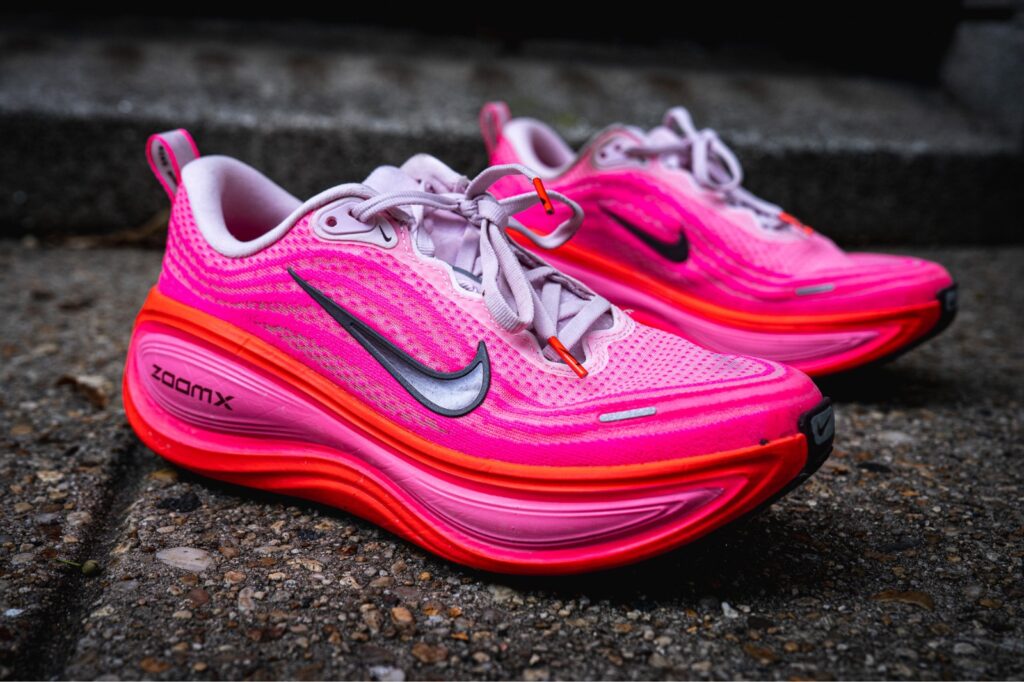
If you really want the most cushion (and the style to go along with it), then just go all out with the Nike Vomero Plus. The stack height is barely more than the Vomero 18 and it’s somehow lighter, but the comfort level is off the charts. With a huge slab of bouncy ZoomX foam in the midsole, this is a true max cushion running shoe and quite possibly the best one of 2025.
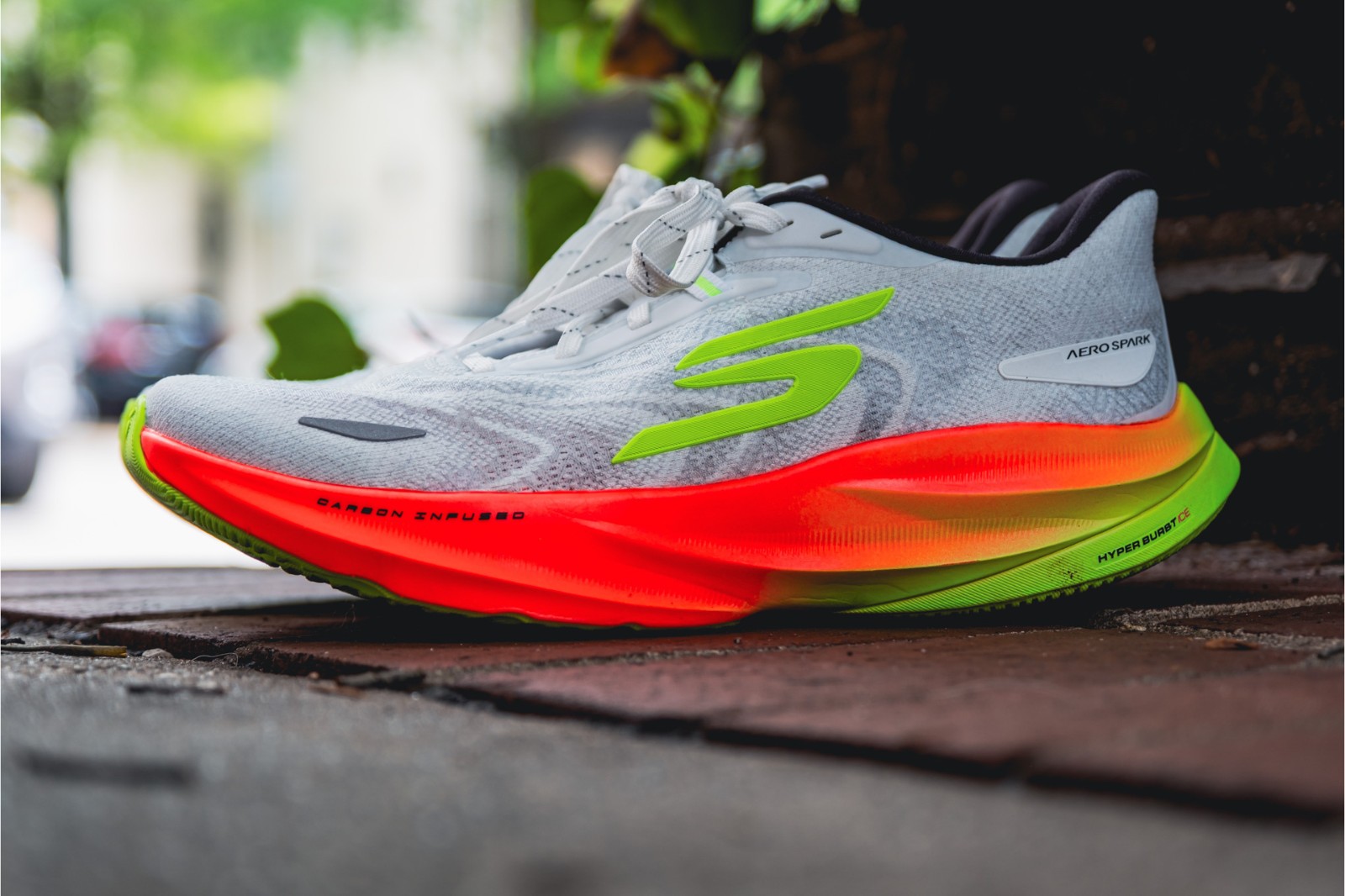
Daily trainer for those on a budget
9.7 oz. (275 g) for a US M9,
7.8 oz. (221 g) for a US W7
36 mm in heel, 30 mm in forefoot (6 mm drop)
Name me the shoe brand that was worn by the last American male to win the Boston Marathon. That’s right, it’s Skechers and it was Meb Keflezighi in the GOMeb Speed 3. Real ones know that Skechers Performance was doing supercritical foams before anyone else, and that– despite the name– the product has always been extremely underrated.
The Aero Spark is Skechers’ light, lower-stack entry in its new Aero lineup — a $130 daily trainer that surprises in more ways than one. With a 36/30 mm stack and HyperBurst Ice midsole, it’s soft without being mushy, bouncy enough to keep runs lively, and light enough to handle a range of paces. Goodyear outsole rubber provides confident grip in all conditions, and the fit is generally comfortable with a breathable engineered mesh upper. It’s a shoe that feels equally at home cruising easy miles or picking up the pace for a fartlek.
It’s not without limits — the foam can feel a little too soft for sustained uptempo efforts, and the basic lacing system could lock down better — but as a value pick, it delivers more than expected. For runners looking outside the big brands, it’s Skechers’ most convincing daily trainer in years.
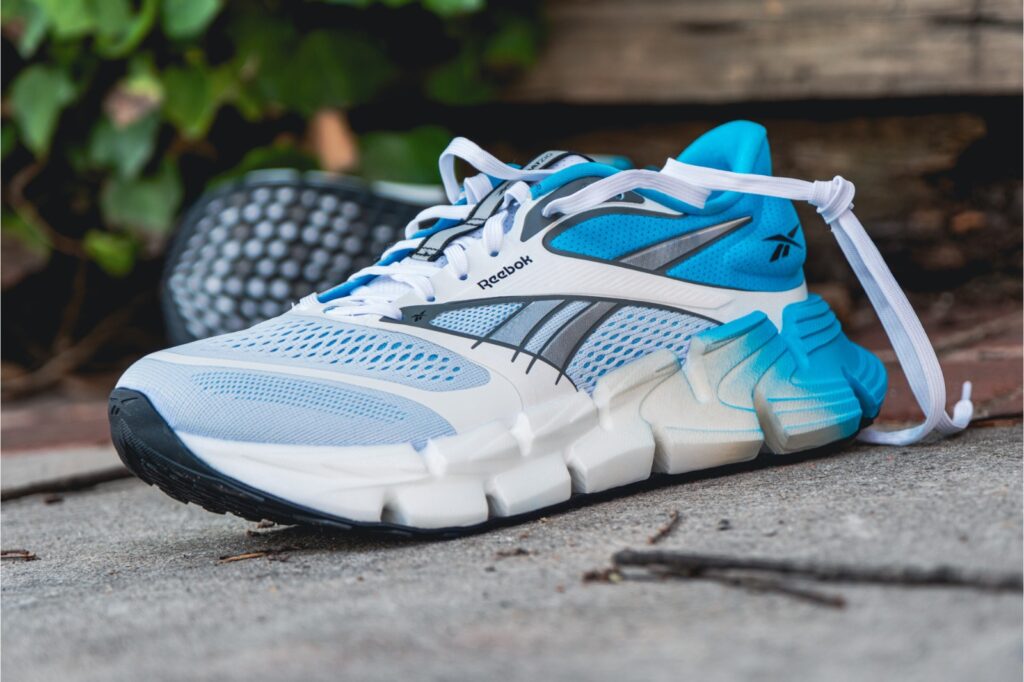
If you’re after a budget-friendly option with a smooth ride and a retro look, the FloatZig 2 delivers. The SuperFloat Plus foam keeps it light and cushioned, and at $120, it’s one of the best-priced daily trainers around — just make sure the fit works for your foot.
All of our recommendations come directly from our feet to your screen. We test countless running shoes here at Believe in the Run, and we let our reviews guide our decisions. However, we also consider other reviews and our BITR community, as not every runner has the same experiences. We also aim to stick with shoes that are currently available so you can give our recommendations a try.
Want to learn more about how our review process works? Check out this guide.
Have something to say? Leave a Comment

Based in northern Colorado, Bryce is a husband, dad, and attorney who finds his clarity on the run. What started as a way to stay fit has become a daily discipline rooted in faith, structure, and forward motion. He is obsessed with training, gear, and early miles—and believes running is one of the best ways to show up for the rest of life.
More from Bryce